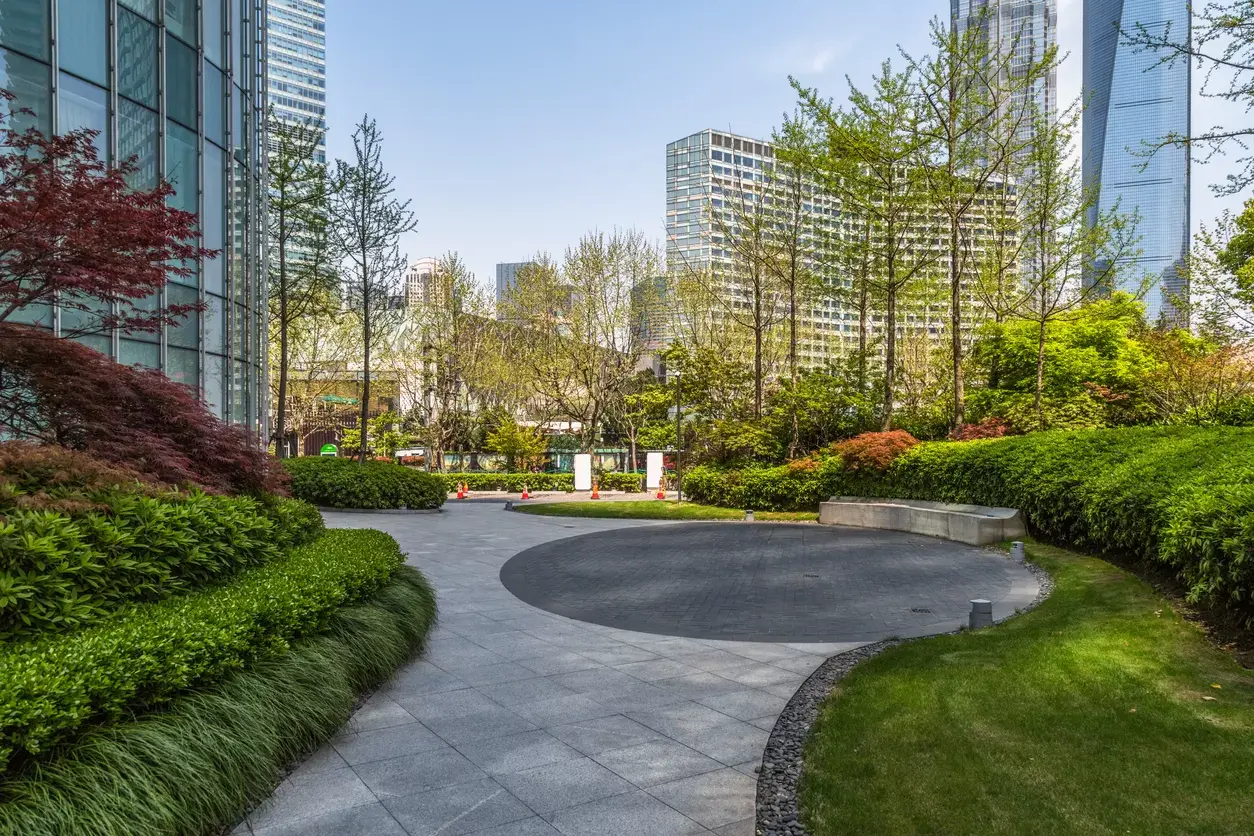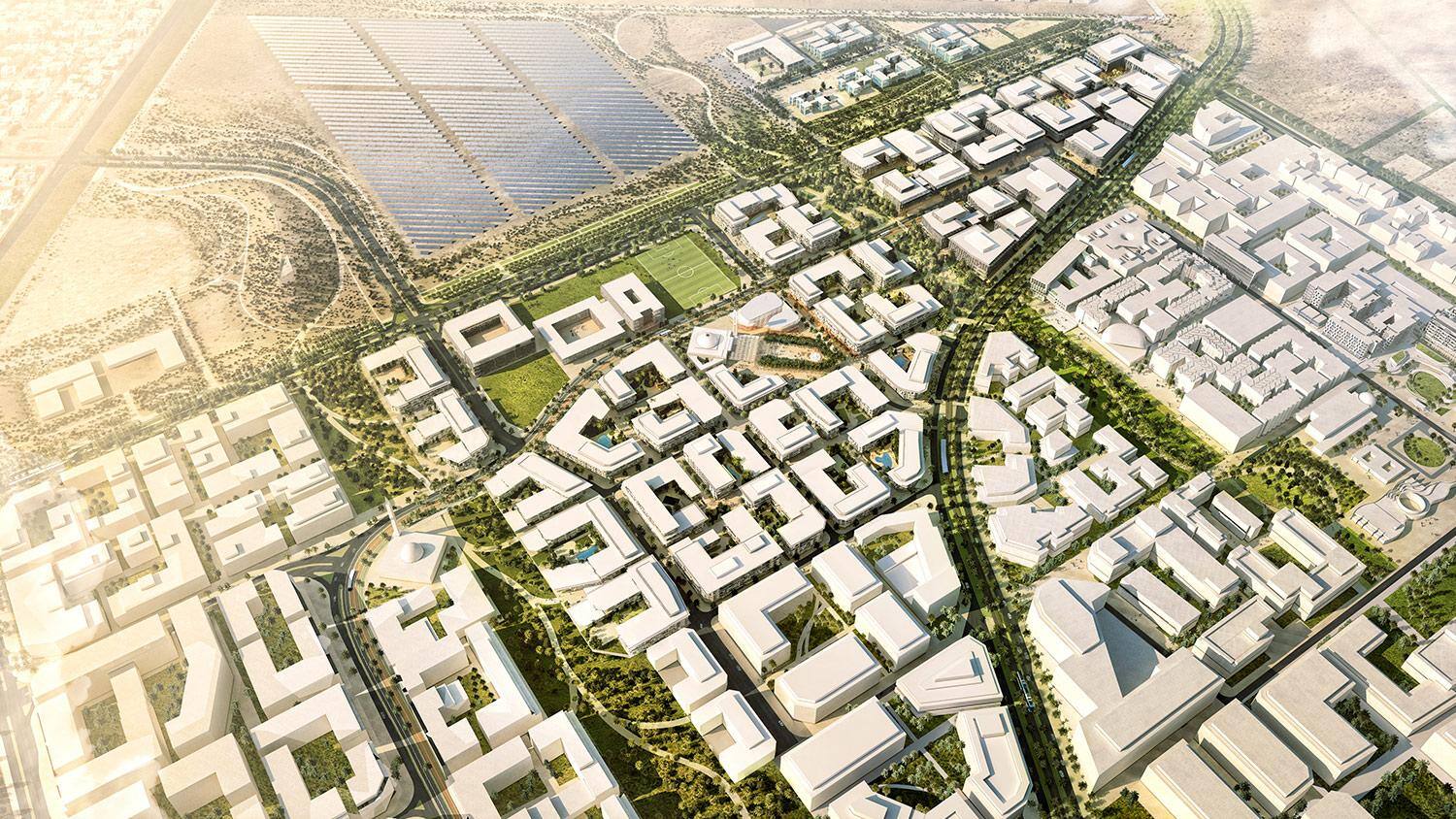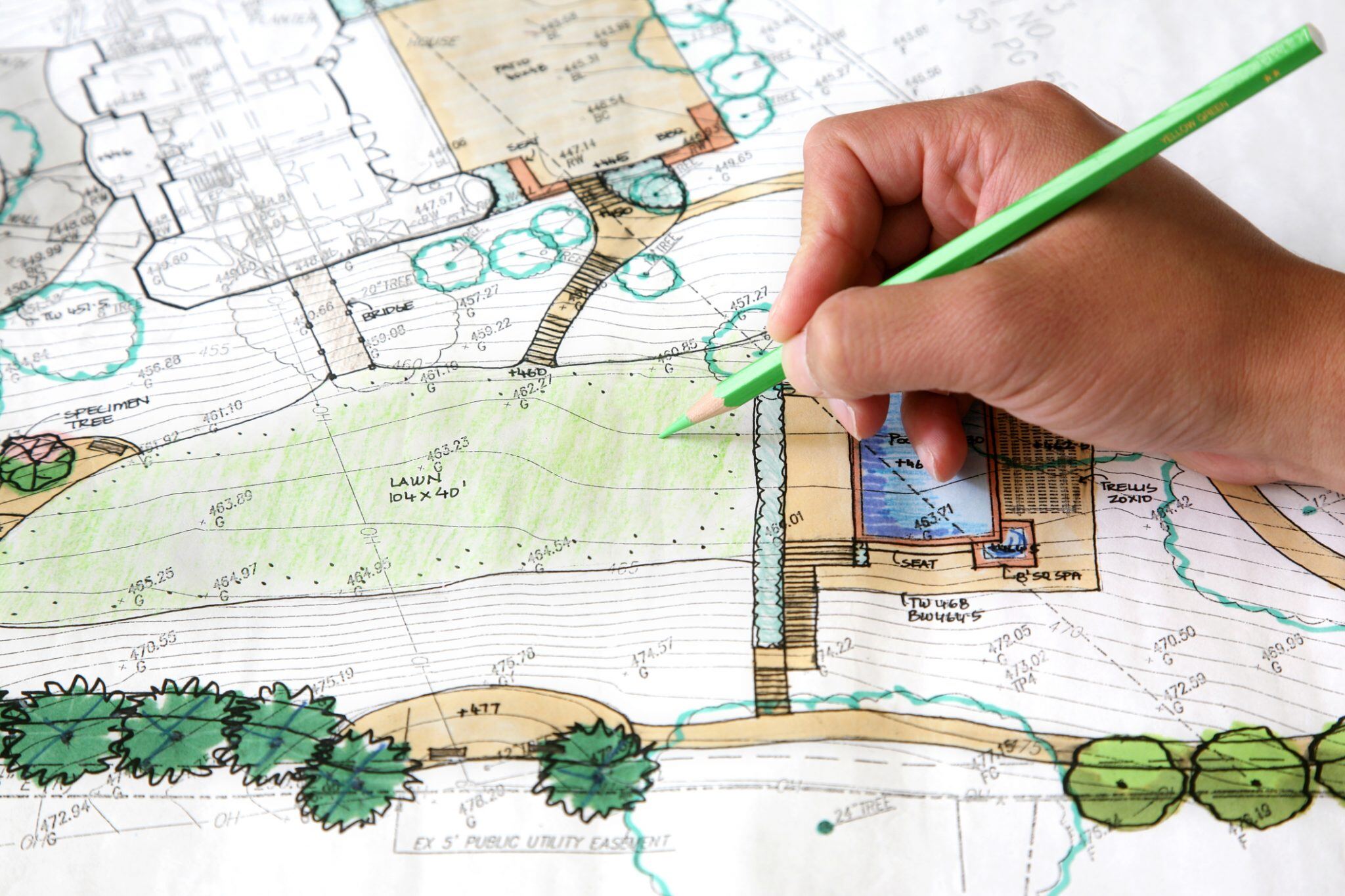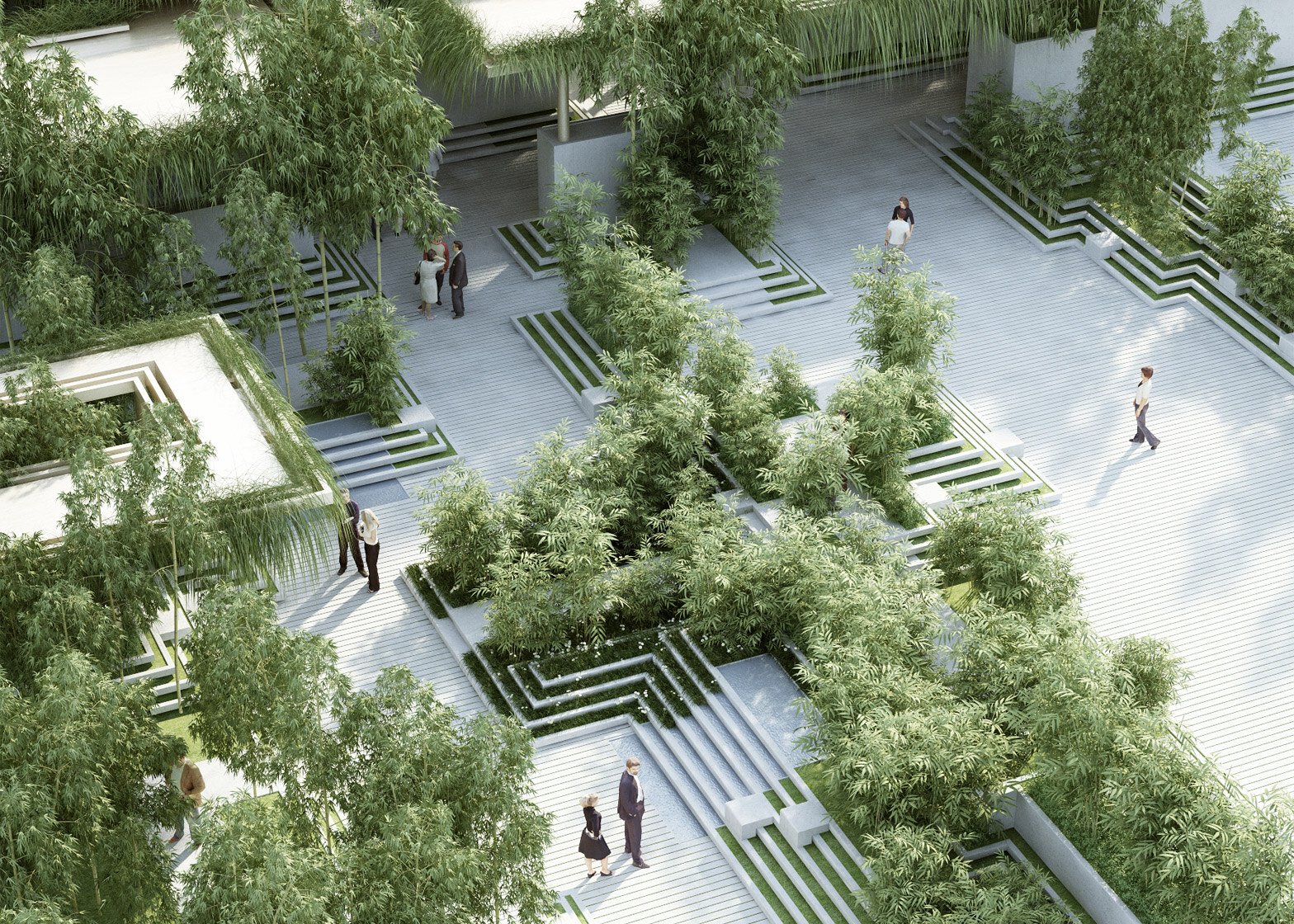The Ultimate Guide to Landscape Designer Career

Table of Contents
Landscaping is the built environment’s yin to the yang. It brings balance to the cityscape and enhances the livability of the urban sprawl.
Simply put, landscape designer jobs inculcate the science of planning and creating outdoor spaces like urban plazas, promenades, courtyards, parks, gardens, and atriums. It involves the strategic arrangement of elements like plants, trees, water features, and hardscapes such as walkways, patios, and retaining walls- all in coherence with the natural environment.
Understanding the Role of a Landscape Designer

Landscape design services involve a mix of technical and creative skills. So, let’s delve further into them:
1. Who is a Landscape Designer?
A landscape designer is a professional who combines architectural creativity and knowledge with a deep understanding of the natural environment to design outdoor spaces. They possess knowledge in horticulture, environmental science, and architectural design principles to create holistically landscaped spaces.
2. What is a Landscape Designer Job Description?
If you are seeking landscape design job opportunities then here’s everything you must know about what the role entails:
- Conducting site analyses to assess the current conditions and potential of a landscape, like soil quality, climate, topography, and existing vegetation.
- Creating detailed plans and drawings, often utilising computational software, to illustrate their vision and guide the construction process.
- Selecting appropriate plants, materials, and features, considering factors like growth patterns, maintenance requirements, and environmental impact.
- Collaborating with other professionals such as architects, engineers, and contractors to ensure the successful implementation of their plans.
- Communicating effectively with clients to ensure their expectations are met is an integral part of a professional’s landscape design career.
- Ensuring modern landscape designs are sustainable, functional, and enhance the beauty of the outdoor space.
- Staying updated with the latest trends like parametric landscape design, materials, and technologies in landscape design to provide innovative and effective solutions.
Essential Skills & Qualifications for Landscape Designer Jobs

To carve yourself a niche in the industry, here are landscape design job requirements that you must take into consideration.
1. Educational Background
To achieve landscape designer jobs, a solid educational foundation is essential. Professionals in this league must have a bachelor's degree in landscape architecture, horticulture, environmental design, or a related field.
These programs typically cover essential topics such as plant science, soil science, landscape ecology, and design principles. Gaining advanced degrees or certifications can further enhance one's expertise and career prospects, particularly for those aiming for leadership roles within the field.
2. Technical Skills
People in landscape designer jobs must possess the following technical skills to effectively plan and execute their designs:
- Proficiency in software like Revit, Dynascape, VizTerra, and Land F/X with AutoCAD
- Knowledge of Geographic Information Systems (GIS) for analysing spatial data
- Understanding of construction techniques and materials
- Sustainable design practices and information about landscape and design
- Familiarity with various plant species, their growth habits, and maintenance needs

3. Soft Skills
In addition to technical expertise, landscape designers must cultivate the following soft skills:
- Strong communication skills for collaborating with clients, contractors, and stakeholders
- Creativity and problem-solving abilities for developing innovative design solutions
- Time management and organisational skills for handling multiple projects and deadlines
- A keen eye for detail and a passion for the natural environment
4. Certifications & Courses
Courses play a vital role in the professional development of landscape designers by providing them with up-to-date knowledge, advanced skills, and industry-recognised credentials. These programs offer specialised training in areas such as sustainable design, advanced horticulture, and new technologies, enabling designers to stay current with evolving trends and practices.
Certificates from reputable institutions and e-learning platforms like Novatr enhance a designer's credibility and demonstrate their commitment to excellence and continuous learning.
Also Check out : Landscape Architecture: Definitions, Types, Elements & More
Career Path & Progression of Landscape Designer Jobs

Making your way into landscape designer jobs involves a hierarchy of roles with varying levels of expertise. Let’s take a deeper dive into them.
1. Entry Level Landscape Designer Jobs
At the beginning of a landscape designer's career, entry-level roles provide the foundation and experience necessary to progress in the field.
- Intern Landscape Architect: Interns usually support senior designers and architects with tasks such as site analysis, drafting, and preparing presentation materials. This role offers hands-on experience and exposure to the practical aspects of landscape design, allowing interns to apply their academic knowledge to real-world projects.
- Junior Landscape Designer: A landscape designer job description at this stage involves working on smaller projects or parts of larger projects under the supervision of senior designers. Responsibilities may include creating preliminary design sketches, developing planting plans, and assisting with client presentations.
2. Mid-Level Roles with Salary
As landscape designers gain experience and expertise, they can advance to mid-level roles that involve greater responsibility and higher salaries. These positions require a solid design principles and client relations understanding.
- Landscape Designer: Your responsibilities include site analysis, design development, and overseeing the installation process. In this career stage, you can also seek landscape design assistant jobs. The salaries for mid-level landscape designers vary based on location and experience but typically range from INR 4,00,000 to INR 8,00,000 per year.
- Project Manager: A project manager in landscape design oversees multiple projects, coordinating with clients, contractors, and other stakeholders to ensure successful project execution. This role requires strong organisational and leadership skills. Salaries for project managers range from INR 6,00,000 to INR 12,00,000 per year.

3. Senior-Level Roles with Salary
The senior-level roles in landscape design involve leading teams, managing complex projects, and contributing to the strategic direction of the firm.
- Senior Landscape Designer: A senior landscape designer leads design teams, mentors junior staff, and works on high-profile projects. They play a key role in client relations, design development, and project management. The ballpark salary figure for senior landscape designers typically ranges from INR 8,00,000 to INR 15,00,000 per year.
- Principal Landscape Architect: Principal designers are responsible for business development, client management, and the overall design direction of the company. This role requires extensive experience, leadership skills, and a proven track record of successful projects. The salaries for principal landscape architects can range from INR 12,00,000 to INR 25,00,000 per year or more.
4. Advanced Roles with Salary
For those with significant experience and expertise, advanced roles offer opportunities for leadership, consulting, and independent work.
- Director of Landscape Architecture: The role of a director involves strategic planning, team leadership, and ensuring the quality and consistency of all design projects. Directors also play a key role in business development and client relations. For this job role, the salaries can range from INR 15,00,000 to INR 30,00,000 per year.
- Landscape Design Consultant: A landscape design consultant provides expert advice and services to clients on a project basis. Consultants often work independently or as part of a firm, and their salaries can vary widely based on the scope and scale of their projects, typically ranging from INR 10,00,000 to INR 20,00,000 per year or more.
5. Freelance Landscape Designer Jobs
As freelancers, you work on landscape designer remote jobs offering your design services to a variety of clients. This role involves managing all aspects of their business, from marketing and client acquisition to project management and design execution. The earnings for freelance landscape designers can vary significantly based on their client base, project types, and market demand, with successful freelancers earning INR 5,00,000 to INR 20,00,000 annually.
Top Certification Courses for Landscape Designers
If you want to excel in a landscape design career, one of the best ways to do so is by enrolling in certification courses. This will help you learn all about landscaping in a streamlined manner. Through courses, you will be introduced to concepts and technicalities that would otherwise be difficult to grasp. So, here’s an overview of the top five programs that can help you bag landscape designer jobs.
1. BIM Professional Course by Novatr
The BIM Professional Course can be your gateway to make a landscape design career. While the program is focused on BIM, it is perfect for landscape designing aspirants who want to leverage technology to their benefit and prepare for the future of work. It covers the fundamentals of BIM, application in landscape design, project management, and collaboration. The curriculum includes:
- Introduction to BIM concepts and principles
- BIM tools and software, such as Revit and Navisworks
- Workflow management and integration with other disciplines
- Case studies and real-world applications
The course is delivered through a mix of interactive online modules, video lectures, and practical assignments by industry experts using their case studies. Additionally, Novatr provides placement assistance for participants to get jobs as landscape designers.
2. Mastering Landscape Design and Maintenance by Udemy
This course for landscape designer jobs provides an in-depth exploration of landscape design principles and maintenance techniques. The curriculum is designed for both beginners and experienced professionals and covers topics such as:
- Fundamentals of urban landscape design, including site analysis and planning
- Plant selection and placement
- Hardscape elements and materials
- Sustainable design practices and maintenance strategies
Teaching methods include video lectures, downloadable resources, and quizzes to reinforce learning. The course also offers lifetime access, allowing learners to revisit the material at their own pace. This flexibility makes it an excellent choice for professionals seeking to enhance their skills and knowledge and build a landscape design career.

3. Landscape Design Certificate Course by Ideaa Institute of Desig
This program by Ideaa Institute of Design provides a comprehensive education covering all the aspects of landscape designer job description. The course curriculum includes:
- Landscape design principles and methodologies
- Site analysis and environmental considerations
- Plant materials and horticulture
- Design software and technology applications
The Ideaa Institute of Design uses a blended learning approach, combining online lectures, practical workshops, and studio sessions. This hands-on experience is invaluable for developing practical skills and applying theoretical knowledge to real-world projects.
Also Check out: How to Become a Landscape Designer: Key Skills and Training
4. Landscape Design Course by SevenMentor
The program focuses on equipping students with the skills necessary to create functional and aesthetically pleasing landscapes. The curriculum incorporates a holistic approach to train people for landscape designer jobs:
- Basics of landscape design and planning
- Use of design software like Revit
- Plant science and selection
- Irrigation and lighting design
SevenMentor employs a mix of classroom instruction, online modules, and practical training. The course emphasises real-world applications, with students working on actual design projects and receiving feedback from instructors. This approach ensures that graduates are well-prepared to tackle the challenges of professional landscape design.
5. Sustainability Through Landscape Design by Udemy
Focussed on sustainability, this course by Udemy focuses on sustainable practices and environmental stewardship in landscape design. The curriculum includes:
- Principles of sustainable landscape design
- Environmental impact assessment
- Water conservation techniques and irrigation systems
- Use of native plants and materials
Teaching methods include video lectures, case studies, and practical exercises. The course also provides access to a community of learners and experts, fostering collaboration and knowledge sharing. After course completion, participants will have a thorough understanding of how to incorporate sustainability into their landscape design projects.
In Conclusion
Landscape design future will be shaped by advancements in technology, sustainability, and urbanisation. With an emphasis on integrating green infrastructure, managing stormwater, and utilising native plant species, sustainability will be the next big thing in landscape design. Additionally, the rise of smart landscapes incorporating sensors and IoT technology will enhance the functionality and efficiency of outdoor spaces. Therefore, it is vital for professionals to upskill in relevant software and tools for bringing relevance to their work.
If you want to secure landscape designer jobs, the best way to do that is through upskilling in relevant courses. For this purpose, we recommend you explore the BIM Professional Course for Architects offered by Novatr. This program encapsulates comprehensive information about landscape designing software with their workflows and processes. This enables the learners to apply their architecture knowledge and diversify their careers in the landscape architecture field. Further, the participants get the opportunity to learn from industry experts and work on capstone projects. Taking you a step ahead, the course also provides placement assistance to spearhead your career and avail exciting landscape design job opportunities.
Check out our Resources page to learn about the latest trends and developments in the built environments.

 Thanks for connecting!
Thanks for connecting!


.png)





